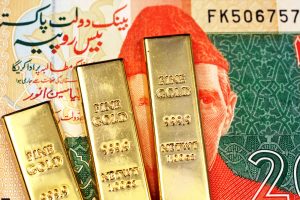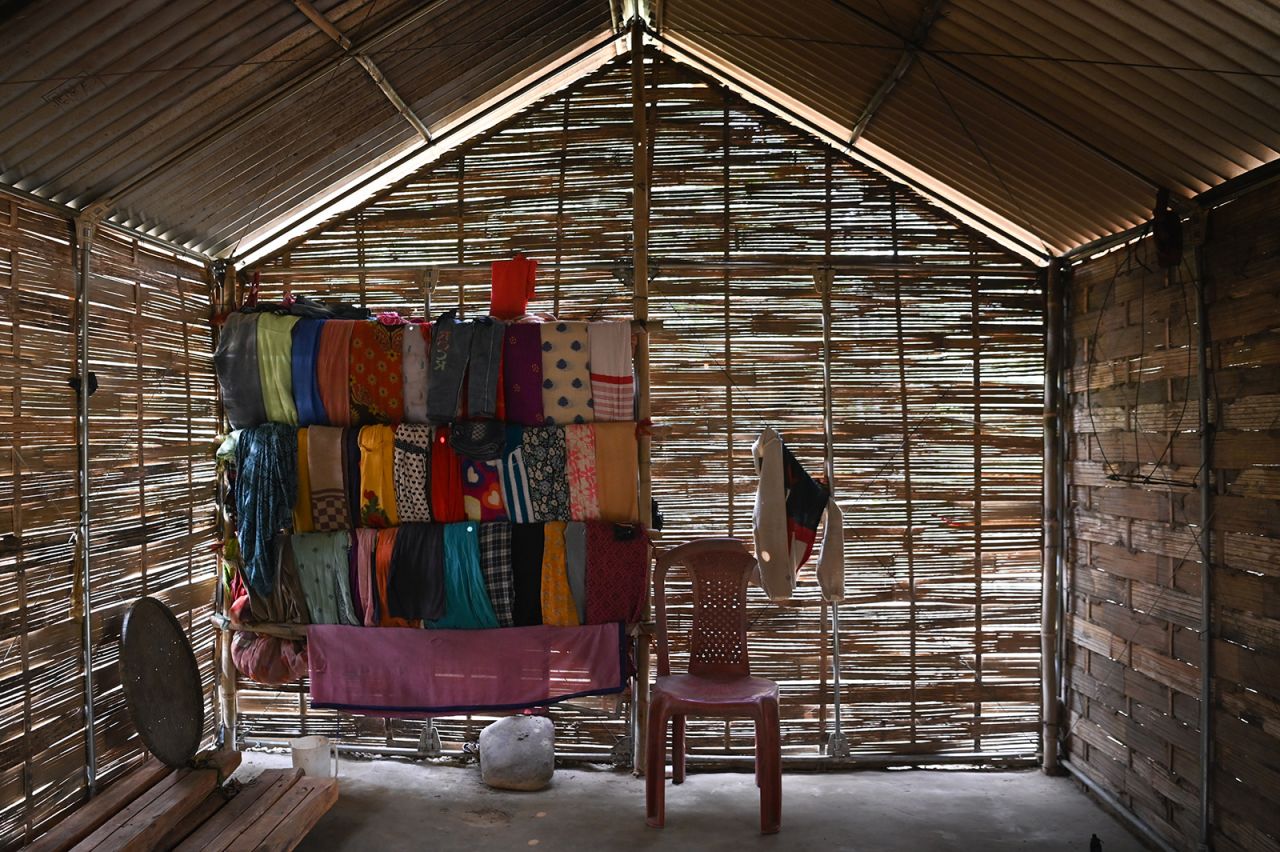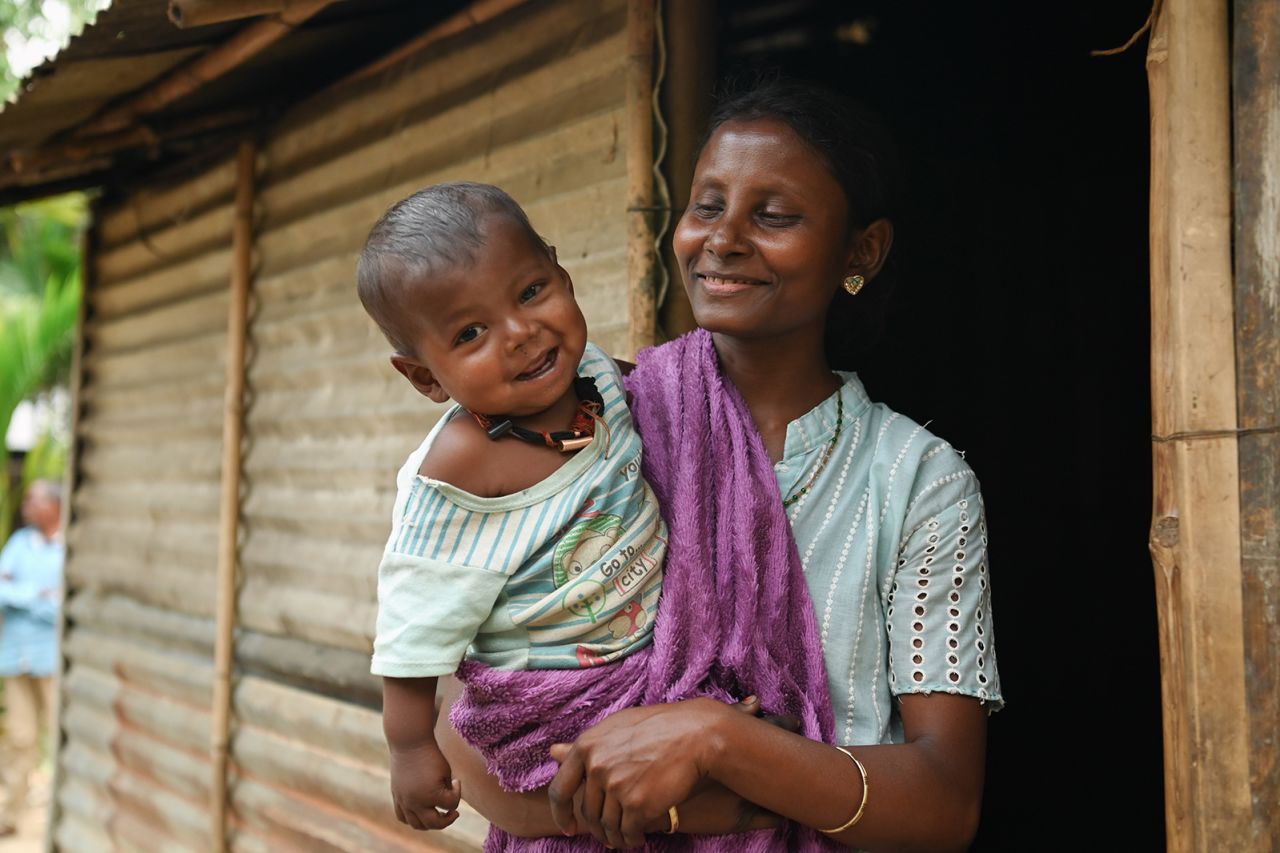Hindutva may have proclaimed the supremacy of all things traditional, but it makes no room for diversity, dynamism, dilemmas, and doubt. Such has never been the only Indian way.
By Devdutt Pattanaik
September 01, 2023
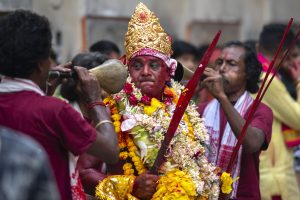
Local musicians blow horns as a Hindu priest, face smeared with color and sacrificial blood, performs rituals during the Deodhani festival at the Kamakhya Hindu temple in Guwahati, India, Saturday, Aug. 19, 2023.
Credit: AP Photo/Anupam Nath
Hindutva can easily be seen as an Indian version of a global movement of men, by men, for men. It reclaims their masculinity and combines religion with nationalism. It can be lumped together with the resurging Orthodox Christianity in post-communist Russia or the Evangelical Christianity sweeping neoliberal America. The enemy in all these cases is both external and internal – anyone who challenges an imagined glorious traditional history, where men played the dominant role, where women knew their place, and all things queer (now articulated as LGBTQ+) existed in shadows and footnotes.
But, with Hindutva, there is one additional challenge: an understanding of Hinduism itself. And the problem is structural.
Hinduism is structurally very different from the monotheistic religions that inform the global discourse. Judaism, Christianity, and Islam are based on ideas such as God, God’s Law, Judgement Day, and the Apocalypse. Hinduism is based on ideas such as infinity, timelessness, rebirth, and caste. As a result, the word “evil” cannot be translated into any Indian language. And the definitive article “the” does not exist in any Indian language either.
There arises a further complication given the fact that even the “modern” concept of the secular nation-state is structurally the same as monotheistic religions. An all-powerful state replaces an all-powerful God. The constitution replaces God’s Law. Traitors replace heretics. Nationalism is submission. Democracy is the ritual to choose the divine messenger who will enforce God’s Law.
Even science follows the structure of monotheistic religions. While it replaces faith with doubt and miracles with measurement, it insists on pursing and presenting “the” truth, like evangelists of yore. So, science and monotheistic religions remain at loggerheads. Only now scientists are being challenged by those who insist feelings are as important as facts. As a result, defining a woman has now become a national crisis in the United States as everyone scrambles for “the” truth. Ontology, not epistemology.
Indians, not just Hindus, have learnt over the centuries that the point of diversity is to work with diverse truths, which make sense to diverse communities. The opposite of equality is not inequality; it is diversity. The opposite of diversity is standardization. Standardization makes things efficient. Diversity, unfortunately, is inefficient.
Hindutva can easily be seen as an Indian version of a global movement of men, by men, for men. It reclaims their masculinity and combines religion with nationalism. It can be lumped together with the resurging Orthodox Christianity in post-communist Russia or the Evangelical Christianity sweeping neoliberal America. The enemy in all these cases is both external and internal – anyone who challenges an imagined glorious traditional history, where men played the dominant role, where women knew their place, and all things queer (now articulated as LGBTQ+) existed in shadows and footnotes.
But, with Hindutva, there is one additional challenge: an understanding of Hinduism itself. And the problem is structural.
Hinduism is structurally very different from the monotheistic religions that inform the global discourse. Judaism, Christianity, and Islam are based on ideas such as God, God’s Law, Judgement Day, and the Apocalypse. Hinduism is based on ideas such as infinity, timelessness, rebirth, and caste. As a result, the word “evil” cannot be translated into any Indian language. And the definitive article “the” does not exist in any Indian language either.
There arises a further complication given the fact that even the “modern” concept of the secular nation-state is structurally the same as monotheistic religions. An all-powerful state replaces an all-powerful God. The constitution replaces God’s Law. Traitors replace heretics. Nationalism is submission. Democracy is the ritual to choose the divine messenger who will enforce God’s Law.
Even science follows the structure of monotheistic religions. While it replaces faith with doubt and miracles with measurement, it insists on pursing and presenting “the” truth, like evangelists of yore. So, science and monotheistic religions remain at loggerheads. Only now scientists are being challenged by those who insist feelings are as important as facts. As a result, defining a woman has now become a national crisis in the United States as everyone scrambles for “the” truth. Ontology, not epistemology.
Indians, not just Hindus, have learnt over the centuries that the point of diversity is to work with diverse truths, which make sense to diverse communities. The opposite of equality is not inequality; it is diversity. The opposite of diversity is standardization. Standardization makes things efficient. Diversity, unfortunately, is inefficient.
Do Australian Politicians Know the Difference Between Hinduism and Hindutva?
Engagement with the growing Hindu community is essential for Australian politicians, but there is an obvious tightrope to walk.
By Grant Wyeth
May 17, 2022
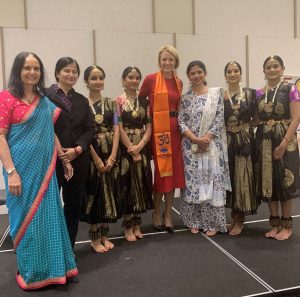
As a highly multicultural society, Australian election campaigns require politicians to actively connect with the country’s array of community groups. This is overwhelmingly a positive phenomenon, yet Australian politicians are generally a socially awkward group, and often lack the cultural sophistication to be able to engage meaningfully with Australia’s multicultural communities. The under-representation of minority communities in Australia’s parliament also limits the necessary knowledge political parties require to connect with minority groups, but also be attentive to any overseas political issues they may be walking blindly into.
The lack of knowledge about Indian politics in particular has become apparent during this election campaign. Indians are Australia’s fastest growing group, and as a result are becoming a critical community to seek support from during elections. However, in recent weeks, in their attempts to do so, both Prime Minister Scott Morrison and the opposition leader, Anthony Albanese, have unwittingly allowed themselves to be used for domestic Indian political purposes.
In early May, Albanese and Shadow Home Affairs Minister Kristina Keneally attended a function at the Hindu Council of Australia, and last week Morrison and Immigration Minister Alex Hawke attended an event hosted by the same organization. During these events all four allowed themselves to be draped in scarves of the Vishva Hindu Parishad (VHP), unaware that they were not simply wearing a religious symbol as a show of respect to their hosts, but instead wearing a highly political symbol of a group they should in no way be seen to implicitly endorse.
The Vishva Hindu Parishad (VHP) are the religious wing of the Sangh Parivar, the umbrella name for a collection of Hindu nationalist organizations that includes its paramilitary wing, the Rashtriya Swayamsevak Sangh (RSS), and its political wing, the Bharatiya Janata Party (BJP), India’s ruling party — all of which are organized around the ideology of Hindutva. While the VHP may in name be the Sangh Parivar’s religious wing, they — in particular the VHP’s own youth organization, the Bajrang Dal — are also often its vigilante wing.
The VHP have been the primary driver of communal violence in India over the past few decades, including the destruction of the Babri Mosque in 1992 and the Gujarat riots in 2002. Vigilante violence against Muslims, Dalits, and Sikhs in India has increased dramatically since the BJP took power in 2014, often with the government’s tacit approval. This violence is part of a collective political project by the Sangh Parivar to construct a new Indian state, one that has animosity toward the country’s minorities as its organizing principle.
This is critical to understand for Australian politicians as the BJP and its sister organizations have actively sought to cultivate an intimate relationship with the Indian diaspora. For the most part these are people who cannot vote in Indian elections, but they serve an ideological and financial purpose. The Sangh Parivar is not simply an organization that wishes to govern the Indian state — the BJP would be a stand-alone political party were this the case. It wants something more from people than just votes; it wants minds and souls (and often fists). This makes transnational reach an essential component of the movement.
Australia has already seen a serious example of this reach with an attack on a group of Sikh men in a Sydney suburb early last year. Providing a blunt illustration of the nature of the Hindutva movement, when a man convicted of the assaults was released after six months in custody he received a hero’s welcome upon his return to India. At the time the immigration minister tweeted, “Attempts to undermine Australia’s social cohesion will not be tolerated.” Yet he obviously didn’t learn the lessons from this incident when he allowed himself to wear the VHP’s insignia last week.
The added complexity for Australian politicians is that Canberra is actively seeking to build a much stronger and more intimate relationship with India. Yet as the BJP has become the country’s dominant political party – and looks like it is now entrenched in this position – the ability to differentiate between the state and its ruling party is becoming more difficult, especially as the Sangh Parivar continues to capture the state.
Australian politicians need to be able to distinguish between Hinduism and Hindutva – Hindutva is a political ideology that seeks to remake Hinduism into an identity rather than a religion, an identity that is based on hostility toward other groups, mostly Muslims, but also Dalits, Sikhs, and Christians. There is an obvious tightrope to walk here for Australian politicians, as engagement with the growing Hindu community is essential and should be encouraged. Yet this will require a keen awareness of when politicians are being co-opted into causes that they should be keeping themselves well clear of.
Engagement with the growing Hindu community is essential for Australian politicians, but there is an obvious tightrope to walk.
By Grant Wyeth
May 17, 2022

As a highly multicultural society, Australian election campaigns require politicians to actively connect with the country’s array of community groups. This is overwhelmingly a positive phenomenon, yet Australian politicians are generally a socially awkward group, and often lack the cultural sophistication to be able to engage meaningfully with Australia’s multicultural communities. The under-representation of minority communities in Australia’s parliament also limits the necessary knowledge political parties require to connect with minority groups, but also be attentive to any overseas political issues they may be walking blindly into.
The lack of knowledge about Indian politics in particular has become apparent during this election campaign. Indians are Australia’s fastest growing group, and as a result are becoming a critical community to seek support from during elections. However, in recent weeks, in their attempts to do so, both Prime Minister Scott Morrison and the opposition leader, Anthony Albanese, have unwittingly allowed themselves to be used for domestic Indian political purposes.
In early May, Albanese and Shadow Home Affairs Minister Kristina Keneally attended a function at the Hindu Council of Australia, and last week Morrison and Immigration Minister Alex Hawke attended an event hosted by the same organization. During these events all four allowed themselves to be draped in scarves of the Vishva Hindu Parishad (VHP), unaware that they were not simply wearing a religious symbol as a show of respect to their hosts, but instead wearing a highly political symbol of a group they should in no way be seen to implicitly endorse.
The Vishva Hindu Parishad (VHP) are the religious wing of the Sangh Parivar, the umbrella name for a collection of Hindu nationalist organizations that includes its paramilitary wing, the Rashtriya Swayamsevak Sangh (RSS), and its political wing, the Bharatiya Janata Party (BJP), India’s ruling party — all of which are organized around the ideology of Hindutva. While the VHP may in name be the Sangh Parivar’s religious wing, they — in particular the VHP’s own youth organization, the Bajrang Dal — are also often its vigilante wing.
The VHP have been the primary driver of communal violence in India over the past few decades, including the destruction of the Babri Mosque in 1992 and the Gujarat riots in 2002. Vigilante violence against Muslims, Dalits, and Sikhs in India has increased dramatically since the BJP took power in 2014, often with the government’s tacit approval. This violence is part of a collective political project by the Sangh Parivar to construct a new Indian state, one that has animosity toward the country’s minorities as its organizing principle.
This is critical to understand for Australian politicians as the BJP and its sister organizations have actively sought to cultivate an intimate relationship with the Indian diaspora. For the most part these are people who cannot vote in Indian elections, but they serve an ideological and financial purpose. The Sangh Parivar is not simply an organization that wishes to govern the Indian state — the BJP would be a stand-alone political party were this the case. It wants something more from people than just votes; it wants minds and souls (and often fists). This makes transnational reach an essential component of the movement.
Australia has already seen a serious example of this reach with an attack on a group of Sikh men in a Sydney suburb early last year. Providing a blunt illustration of the nature of the Hindutva movement, when a man convicted of the assaults was released after six months in custody he received a hero’s welcome upon his return to India. At the time the immigration minister tweeted, “Attempts to undermine Australia’s social cohesion will not be tolerated.” Yet he obviously didn’t learn the lessons from this incident when he allowed himself to wear the VHP’s insignia last week.
The added complexity for Australian politicians is that Canberra is actively seeking to build a much stronger and more intimate relationship with India. Yet as the BJP has become the country’s dominant political party – and looks like it is now entrenched in this position – the ability to differentiate between the state and its ruling party is becoming more difficult, especially as the Sangh Parivar continues to capture the state.
Australian politicians need to be able to distinguish between Hinduism and Hindutva – Hindutva is a political ideology that seeks to remake Hinduism into an identity rather than a religion, an identity that is based on hostility toward other groups, mostly Muslims, but also Dalits, Sikhs, and Christians. There is an obvious tightrope to walk here for Australian politicians, as engagement with the growing Hindu community is essential and should be encouraged. Yet this will require a keen awareness of when politicians are being co-opted into causes that they should be keeping themselves well clear of.
Defying Deification: Indian Politicians as Hindu Gods
Don’t believe the hype; worshiping Indian leaders is not common.
By Krzysztof Iwanek
February 01, 2019
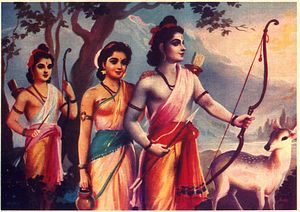
Two posters caught the attention of the Indian media in January this year, and each happened to portray a sibling from the same political family. One – a badly photoshopped merger – showed the god Rama’s torso, complete with a quiver hanging from his back, but with the face of a political leader, Rahul Gandhi, superimposed on the deity’s head. The other posters compared Priyanka Gandhi, Rahul’s sister and also a politician, to goddess Durga, a deity that represents the feminine cosmic power in the universe. One of those posters was a double reference: Priyanka Gandhi is the granddaughter of Indira Gandhi, the famous prime minister of India who had been, if very seldom, portrayed as Durga herself. Thus, somebody chose to portray Priyanka Gandhi as not only the reincarnation of Indira Gandhi but, by default, also Durga’s coming to this earth.
There are more such instances. There is a temple dedicated to the deceased Indira Gandhi in central India, and worship there continued at least as of 2017. The same Rahul Gandhi was also portrayed as Rama on posters a year ago. At that time he was shown aiming a bow at his political rival, Prime Minister Narendra Modi, who was likened to the demon Ravana, a mythological figure whom Rama killed. Like Ravana, Modi was portrayed with 10 heads, his face copied into each of them. No nuances here – our leader is a god, their leader is the king of demons.
Ironically, Rahul and Priyanka Gandhi represent the Indian National Congress, a party usually perceived as the socialist and secular power, the biggest alternative to the Bharatiya Janata Party (BJP). The BJP is now led by Modi and his associates – and is currently ruling India. It is this party that is more often accused of arousing religious sentiments and more often refers to Hindu traditions. The ground reality, however, shows the Congress and the BJP are not as far from each other as many would like to think.
But the BJP has had its share of district-level deifications as well. During the 2014 elections, a chant often raised in favor of Modi was a remake of a religious mantra that worships the god Shiva (“Har Har Modi” instead of “Har Har Mahadev”). Local party members from the holy Hindu city of Varanasi – a constituency where Modi was fighting elections at that time – even changed the words of a Sanskrit prayer, putting “Modi” instead of “Devi” (Goddess). Moreover, just like Indira Gandhi, Modi was also supposed to have a temple built for him in Meerut (though I do not know how this story has ended).
y of the week, and developing stories to watch across the Asia-Pacific.GET THE
The same, perhaps even more rarely, may happen to politicians of other parties as well. A member of the All India Trinamool Congress – the party now ruling West Bengal – once suggested that its members should wear the picture of the undisputed party leader, Mamata Banerjee, as a lucky charm against the evil magic of their political rivals (the communists).
All of these, however, are scattered and regional instances and we should not read too much into them. Religion and politics are obviously intertwined in many ways in India – as they are in many places. But this does not mean that Indian politicians are often portrayed as gods and that this is the national trend.
These occurrences can perhaps be explained by looking at the nature of Hinduism. First of all, it is not a centralized religion with a hierarchical clergy and a strict doctrine, like the Roman Catholic Church. The actions of the people who established an Indira Gandhi temple or those who planned to found a Narendra Modi temple were not authorized by any central institution, and there was no such decisive apex body they could have asked anyway. Many, if not most, Hindu priests would perhaps disapprove of such acts. I do not have any survey at hand to prove this but there have been instances of highly respected Hindu figures criticizing such deifications. Media pundits may sometimes raise the hype but the orthodox pandits are not really behind all of this.
These initiatives are usually not even endorsed by the central party leadership. Most of these deifying posters and slogans were prepared by regional party workers, or others. It is the local tribal community that worships Indira Gandhi in central India. When Rahul Gandhi was depicted as Rama fighting the “Ravana Modi,” the Congress leadership pointed out that the posters were “unofficial” (but did not reject them). When Modi’s name was included in a Sanskrit prayer, the state president of the BJP criticized this and declared that it should not have been done. Modi himself, while very much focused on building and sustaining his image, spoke against the cult-like adoration of people (vyakti-puja). Such deifications happen because the district-level gung-ho party activists may sometimes go to extremes to make their efforts noticed and their voices heard.
Second, with no centralized and strict doctrine to go by, Hinduism is a collection of many different cults and traditions which do not have to be – and often are not – coherent. Or, to put it differently: In the 19th century, when the image of Hinduism in the West had been established, the benchmark for any religion as defined in Europe was the Roman Catholic Church. This is the only reason why Hinduism was and is described as “a less organized” and “less centralized” religion – in comparison only, by arbitrarily using Christianity (and Catholicism in particular) as the yardstick for all religions. Many examples of local Hindu cults may be challenged with completely different instances from other regions but this does not negate them or make them less true or genuine. It is the same on the political level. There is historical evidence that in some marginal cases Mahatma Gandhi was worshiped like a near-god or a saintly figure. Nowadays, a fringe radical party, Hindu Mahasabha, has established a temple where Gandhi’s killer, Nathuram Godse, is believed to be worshiped. Once again, neither of these cults are authorized by established religious figures nor must they be perceived as representing the same religious tradition (or any tradition). Defining and understanding Hinduism is certainly not arrived at by stamping each tradition with a “Hindu cult” brand.
Third, some of the deities of Hinduism live “closer” to men. Holy men are often worshiped as gods and some deities were believed to have descended to Earth in various myths (such as those about Vishnu’s avatars). This is perhaps why it is easier for some politicians to bandwagon behind these religious traditions by trying to deify party leaders.
While there should be no hype around these attempts, they do confirm the significant role of Hinduism in modern Indian society and as a rallying force in the country’s politics.
Don’t believe the hype; worshiping Indian leaders is not common.
By Krzysztof Iwanek
February 01, 2019

Two posters caught the attention of the Indian media in January this year, and each happened to portray a sibling from the same political family. One – a badly photoshopped merger – showed the god Rama’s torso, complete with a quiver hanging from his back, but with the face of a political leader, Rahul Gandhi, superimposed on the deity’s head. The other posters compared Priyanka Gandhi, Rahul’s sister and also a politician, to goddess Durga, a deity that represents the feminine cosmic power in the universe. One of those posters was a double reference: Priyanka Gandhi is the granddaughter of Indira Gandhi, the famous prime minister of India who had been, if very seldom, portrayed as Durga herself. Thus, somebody chose to portray Priyanka Gandhi as not only the reincarnation of Indira Gandhi but, by default, also Durga’s coming to this earth.
There are more such instances. There is a temple dedicated to the deceased Indira Gandhi in central India, and worship there continued at least as of 2017. The same Rahul Gandhi was also portrayed as Rama on posters a year ago. At that time he was shown aiming a bow at his political rival, Prime Minister Narendra Modi, who was likened to the demon Ravana, a mythological figure whom Rama killed. Like Ravana, Modi was portrayed with 10 heads, his face copied into each of them. No nuances here – our leader is a god, their leader is the king of demons.
Ironically, Rahul and Priyanka Gandhi represent the Indian National Congress, a party usually perceived as the socialist and secular power, the biggest alternative to the Bharatiya Janata Party (BJP). The BJP is now led by Modi and his associates – and is currently ruling India. It is this party that is more often accused of arousing religious sentiments and more often refers to Hindu traditions. The ground reality, however, shows the Congress and the BJP are not as far from each other as many would like to think.
But the BJP has had its share of district-level deifications as well. During the 2014 elections, a chant often raised in favor of Modi was a remake of a religious mantra that worships the god Shiva (“Har Har Modi” instead of “Har Har Mahadev”). Local party members from the holy Hindu city of Varanasi – a constituency where Modi was fighting elections at that time – even changed the words of a Sanskrit prayer, putting “Modi” instead of “Devi” (Goddess). Moreover, just like Indira Gandhi, Modi was also supposed to have a temple built for him in Meerut (though I do not know how this story has ended).
y of the week, and developing stories to watch across the Asia-Pacific.GET THE
The same, perhaps even more rarely, may happen to politicians of other parties as well. A member of the All India Trinamool Congress – the party now ruling West Bengal – once suggested that its members should wear the picture of the undisputed party leader, Mamata Banerjee, as a lucky charm against the evil magic of their political rivals (the communists).
All of these, however, are scattered and regional instances and we should not read too much into them. Religion and politics are obviously intertwined in many ways in India – as they are in many places. But this does not mean that Indian politicians are often portrayed as gods and that this is the national trend.
These occurrences can perhaps be explained by looking at the nature of Hinduism. First of all, it is not a centralized religion with a hierarchical clergy and a strict doctrine, like the Roman Catholic Church. The actions of the people who established an Indira Gandhi temple or those who planned to found a Narendra Modi temple were not authorized by any central institution, and there was no such decisive apex body they could have asked anyway. Many, if not most, Hindu priests would perhaps disapprove of such acts. I do not have any survey at hand to prove this but there have been instances of highly respected Hindu figures criticizing such deifications. Media pundits may sometimes raise the hype but the orthodox pandits are not really behind all of this.
These initiatives are usually not even endorsed by the central party leadership. Most of these deifying posters and slogans were prepared by regional party workers, or others. It is the local tribal community that worships Indira Gandhi in central India. When Rahul Gandhi was depicted as Rama fighting the “Ravana Modi,” the Congress leadership pointed out that the posters were “unofficial” (but did not reject them). When Modi’s name was included in a Sanskrit prayer, the state president of the BJP criticized this and declared that it should not have been done. Modi himself, while very much focused on building and sustaining his image, spoke against the cult-like adoration of people (vyakti-puja). Such deifications happen because the district-level gung-ho party activists may sometimes go to extremes to make their efforts noticed and their voices heard.
Second, with no centralized and strict doctrine to go by, Hinduism is a collection of many different cults and traditions which do not have to be – and often are not – coherent. Or, to put it differently: In the 19th century, when the image of Hinduism in the West had been established, the benchmark for any religion as defined in Europe was the Roman Catholic Church. This is the only reason why Hinduism was and is described as “a less organized” and “less centralized” religion – in comparison only, by arbitrarily using Christianity (and Catholicism in particular) as the yardstick for all religions. Many examples of local Hindu cults may be challenged with completely different instances from other regions but this does not negate them or make them less true or genuine. It is the same on the political level. There is historical evidence that in some marginal cases Mahatma Gandhi was worshiped like a near-god or a saintly figure. Nowadays, a fringe radical party, Hindu Mahasabha, has established a temple where Gandhi’s killer, Nathuram Godse, is believed to be worshiped. Once again, neither of these cults are authorized by established religious figures nor must they be perceived as representing the same religious tradition (or any tradition). Defining and understanding Hinduism is certainly not arrived at by stamping each tradition with a “Hindu cult” brand.
Third, some of the deities of Hinduism live “closer” to men. Holy men are often worshiped as gods and some deities were believed to have descended to Earth in various myths (such as those about Vishnu’s avatars). This is perhaps why it is easier for some politicians to bandwagon behind these religious traditions by trying to deify party leaders.
While there should be no hype around these attempts, they do confirm the significant role of Hinduism in modern Indian society and as a rallying force in the country’s politics.
https://thediplomat.com/
